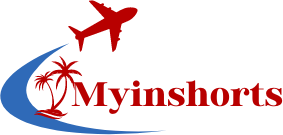Introduction to the importance of fashion in professional life
Fashion isn’t just about looking good; it’s a powerful tool that shapes perceptions and influences opportunities in the professional world. The way we dress can convey confidence, competence, and attention to detail. From boardrooms to creative studios, what you wear sends a message before you even say a word.
Picture this: You walk into an interview wearing tailored attire that fits perfectly versus casual clothing that’s more suited for the weekend. Which version of yourself do you think leaves a stronger impression? In today’s competitive job market, understanding how fashion plays into your professional life is crucial—not just for landing the job but also for advancing in your career.
As we delve deeper into this topic, we’ll explore how personal style impacts your image at work and why being attuned to workplace dress codes matters more than ever. Get ready to discover practical tips on dressing smartly without breaking the bank while navigating through industry-specific trends that could boost your success!
How clothes can affect confidence and first impressions
The clothes we wear can significantly shape our self-confidence. Slip into that well-fitted blazer, and suddenly, you feel more powerful. It’s incredible how a simple outfit change can elevate your mood.
First impressions are often formed in mere seconds. A polished appearance suggests professionalism and competence. When you’re dressed appropriately for the occasion, it builds trust with colleagues and clients alike.
Colors play a vital role too. Bright shades may convey energy, while darker tones might signal authority. The right choice can enhance your presence in any room.
Understanding the psychological impact of clothing allows us to harness its power effectively. Dress intentionally to reflect not just who you are but also where you aim to be in your career journey.
The role of personal style in building a professional image
Personal style is a powerful tool in shaping your professional image. It communicates who you are before you even say a word.
When you express yourself through fashion, it showcases your individuality and creativity. A unique look can set you apart in a crowded room or meeting.
Choosing outfits that resonate with your personal taste while adhering to workplace norms strikes the perfect balance. It’s about finding that sweet spot where comfort meets professionalism.
Moreover, consistency plays a vital role. When people recognize your distinct style, they start associating it with your work ethic and reliability.
The right attire can also enhance how others perceive your capabilities, making confidence shine through. In environments that value authenticity, letting personal flair reflect off of polished clothing can foster stronger connections and networks within the industry.
Dress codes and their impact on workplace culture
Dress codes play a significant role in shaping workplace culture. They set the tone for how employees interact and perceive one another. A casual dress code can foster creativity and approachability, while formal attire might promote professionalism and respect.
When companies establish clear guidelines, they create a sense of belonging among staff members. Employees often feel more confident when they understand what is expected of them regarding appearance.
However, strict dress codes can also stifle individuality. This may lead to feelings of discomfort or disconnection from personal style. Balancing professionalism with self-expression is key for many organizations today.
Moreover, industries that embrace flexibility often attract diverse talent pools. As businesses evolve, so too does their approach to workplace fashion, reflecting broader societal changes in attitudes toward gender and identity expression.
Dress codes play a significant role in shaping workplace culture. They create a sense of unity and professionalism among employees. When everyone adheres to the same dress code, it can foster an environment of equality and teamwork.
On the flip side, strict dress codes may stifle personal expression. Employees might feel confined by rules that limit their individuality. A balance is essential; allowing for some flexibility can lead to greater job satisfaction without sacrificing professionalism.
Companies with relaxed dress codes often see higher morale and increased creativity among their teams. This freedom allows individuals to showcase their unique styles while still aligning with the organization’s values.
Ultimately, how we choose to present ourselves at work influences not just our image but also the overall atmosphere of our workplace. Fashion is a powerful tool that can enhance or hinder professional interactions—an important aspect worth considering in today’s work environments.
Fashion trends in different industries and their influence on career success
Fashion trends vary significantly across industries, each reflecting its unique culture and values. In tech, casual wear dominates. Think hoodies and sneakers that promote comfort and creativity. Yet, this relaxed approach can also signal a laid-back work ethic to clients.
On the other hand, finance professionals often opt for tailored suits. The polished look conveys authority and competence. First impressions matter here; attire can open doors or close them quickly.
Creative fields like advertising embrace bold styles. Vibrant colors and eclectic pieces demonstrate innovation and individuality—key traits in such environments.
Even within these guidelines, subtle variations exist based on regional preferences or company policies. Adapting to industry-specific fashion not only enhances your image but also builds rapport with colleagues and clients alike.
Understanding these nuances can be crucial for career advancement in any field you choose to pursue.
Tips for dressing professionally without breaking the bank
Dressing professionally doesn’t have to drain your wallet. Start by investing in a few versatile pieces that can be mixed and matched easily. A classic blazer, tailored trousers, and a good pair of shoes can form the backbone of your wardrobe.
Explore thrift stores or online second-hand shops for hidden gems. You’d be surprised at the quality you can find at a fraction of the price.
Don’t overlook sales or clearance sections—seasonal discounts are perfect opportunities to snag quality items without overspending.
Accessorizing wisely also elevates your look significantly. Simple jewelry or a stylish belt can transform an outfit from basic to polished.
Consider DIY alterations if you have clothes that need slight modifications. Simple sewing skills can personalize an item, giving it new life while keeping costs low.
Prioritize comfort—it boosts confidence and enhances performance throughout your workday.
The evolution of workplace fashion and its impact on gender equality
Workplace fashion has transformed dramatically over the decades. Once defined by rigid suits and formal attire, the landscape now embraces versatility and individual expression. This shift reflects broader societal changes, particularly in attitudes toward gender roles.
For women entering the workforce, professional dress codes have historically been a challenge. The expectation to don skirts or dresses often overshadowed comfort and practicality. However, as industries evolve, so do these norms.
Now, tailored pantsuits and smart-casual wear are gaining traction for everyone. This evolution promotes equality by allowing both men and women to present themselves authentically.
Moreover, companies that encourage personal style create inclusive environments. By recognizing diversity in appearance, they empower employees to focus on their work rather than conforming to outdated standards of dress.
The changing tides of workplace fashion not only enhance confidence but also support a culture where talent takes precedence over appearance.
Conclusion: Embracing fashion as a tool for success in the professional
Fashion is more than just clothing; it’s a powerful tool in the professional landscape. The way we dress speaks volumes about our identity and work ethic. When you embrace your personal style, you communicate confidence and competence to those around you.
Dressing well can open doors and create opportunities that may not have been accessible otherwise. It influences how colleagues perceive you, impacts workplace dynamics, and even affects your own self-image. Being mindful of fashion allows you to navigate various environments while still expressing who you are.
As industries continue to evolve, so too does the understanding of appropriate attire. Companies are increasingly recognizing that individual expression can coexist with professionalism. This shift fosters inclusivity and challenges outdated norms.
Whether you’re on a tight budget or looking for high-end pieces, dressing professionally doesn’t need to drain your wallet. With creativity, thrift shopping, or smart tailoring choices, achieving a polished look is possible for everyone.
By embracing fashion thoughtfully—considering both trends and timelessness—you position yourself for success in any career path. After all, what we wear can be instrumental in shaping our professional journeys and reaching new heights within them.


